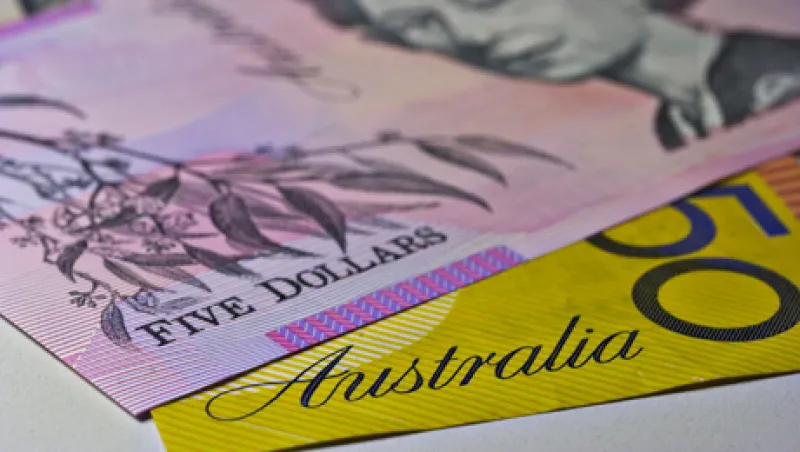With most of the world’s attention focused on the euro and the U.S. dollar as a result of the debt deal reached in Brussels last week, it’s worth looking at the Australian dollar.
The Aussie was among those currencies that had a large gain Thursday after the deal was announced, rising almost 12 percent. Analysts attribute that to a general increase in appetite for riskier assets now that the European debt crisis is resolved, at least temporarily.
But the medium to longer term outlook for the Aussie, which has been the strongest of the currency in the G10 bloc of currencies, the world’s biggest currency group, since the beginning of October, is less bright.
“We have concerns about the durability of the rally in the Aussie,” says Sean Callow, currency strategist at Westpac Banking Corp. in Sydney. “The main point is that nothing in the agreement changes the outlook for European growth at all. So I think the Aussie is in danger of pulling back a bit.”
Although Australia is a relatively small country, its currency plays a disproportionately big role on the world stage, compared with the relatively tiny size of the country’s economy. According to the Bank for International Settlements, $83 billion of U.S. dollar–Aussie dollar trades were carried out daily in April 2010, making it the fourth-largest currency pair traded in the world, ahead of the U.S. dollar paired with the Canadian dollar and the Swiss franc.
The Aussie is often traded as a proxy for the economic situation in Asia because Australia exports commodities such as iron and grain to the Asian market. Recently, there have been reports that some major exporters, such as Russia and China, have started using Aussie dollar assets to diversify their foreign exchange reserves away from the U.S. dollar and the euro.
The Aussie has also been a favorite of the so-called carry trade, in which investors borrow money in low-interest currencies like the Japanese yen and the U.S. dollar and buy higher-yielding assets. That scenario may be changing: The Reserve Bank of Australia issued minutes this week that suggest it will cut the cash rate by 25 basis points next week, to 4.5 percent.
Marc Chandler, global head of currency strategy at Brown Brothers Harriman & Co. in New York, says he thinks there is a good case for the weakening of the Aussie over the middle term. “The negative outlook for the Aussie is based in the Australian economy weakening, the world economy slowing and the end of the commodity bubble,” Chandler says.
He notes that iron ore prices have dropped 30 percent in recent months thanks to slower imports from Asia, mainly China. Australian exports of iron ore have contributed to a rare trade surplus for the country over the past year. Most of those contracts are denominated in U.S. dollars, so Australian exporters sell the U.S. currency they receive and buy Australian dollars; this tends to drive up the exchange rate.
There have also been large inflows of foreign investment into commodity industries in Australia, further driving up the currency.
“The Aussie is terribly overvalued,” Chandler says. According to some measures, using purchasing-power parity, the Australian dollar is more than 50 percent overvalued.






